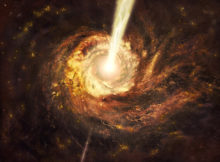
17. The moon Is Getting Farther Away
The Moon, Earth’s celestial companion, exerts a gravitational force that isn’t uniform across our planet. This gravitational pull causes Earth to assume a slightly egg-shaped, or oblate, form, with a subtle bulge at the equator.
However, its influence on water is even more pronounced. The Moon’s gravitational tug gives rise to the phenomenon we know as tides, creating a gravitational gradient across the oceans. This gradient leads to the oceans piling up on one side of the planet, resulting in the formation of a ‘tidal bulge.’
Interestingly, as the Moon orbits our planet, this tidal bulge is not stationary but rather dragged along by the Moon’s gravitational pull. Since Earth rotates at a faster rate than the Moon orbits it—completing one rotation in 24 hours compared to the Moon’s 27.3 days—the tidal bulge precedes the Moon’s orbital position slightly.
This dynamic interaction between Earth and the Moon has intriguing consequences. The Moon’s gravitational force acts as a brake on this forward-moving tidal bulge, effectively attempting to decelerate Earth’s rotation. Over time, this gravitational tug-of-war causes Earth’s rotation rate to gradually slow down.
As a direct outcome of this interaction through gravity, Earth loses a minuscule amount of its energy, while the Moon gains energy in return. Consequently, the Moon experiences a gradual increase in its orbital radius. It spirals away from Earth at an average rate of about 3.8 centimeters per year, illustrating the subtle but continuous dance of celestial bodies and the evolving dynamics of our solar system.
